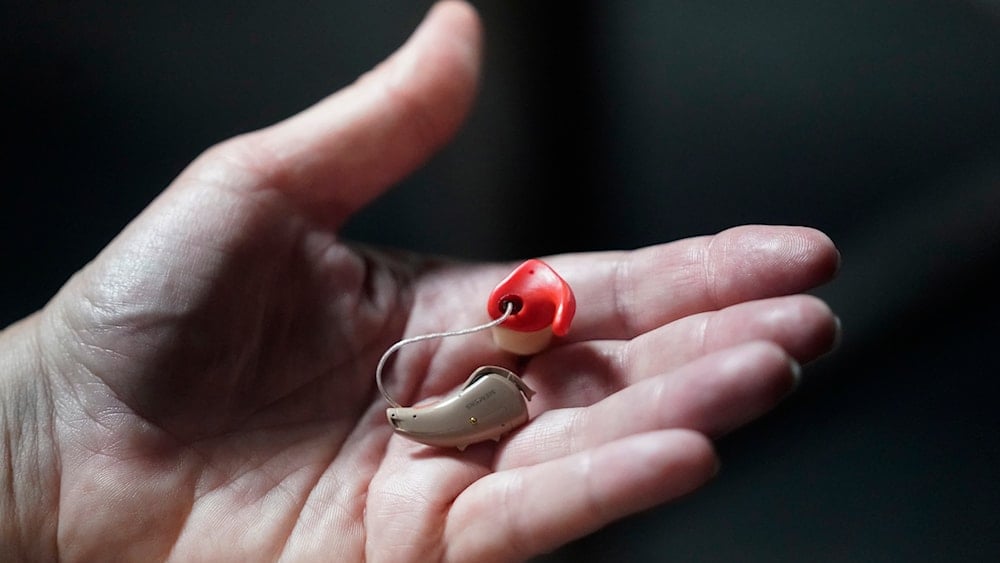Gene therapy trial cures deaf UK toddler in world's first
Following a 16-minute surgery introducing an infusion that has a functioning copy of a gene, Opal Sandy can now hear almost perfectly and have a good time playing with toy drums.
-

Hearing aid is being held in a palm on Friday, April 15, 2022, in Salt Lake City (AP)
After becoming the first person ever to partake in a leading gene therapy trial, a British toddler has gotten her hearing back in a development labeled by doctors as the mark of a new era in deafness treatment.
Due to auditory neuropathy, a condition possibly caused by a faulty gene that disrupts nerve impulses traveling from the inner ear to the brain, 18-month-old Opal Sandy was born deaf.
However, following a 16-minute surgery introducing an infusion that has a functioning copy of the gene, Sandy can now hear almost perfectly and have a good time playing with toy drums.
After acknowledging that she can finally hear for the first time following her treatment, Sandy's parents expressed that they were left "gobsmacked" and her mom said that she "couldn’t really believe it," emphasizing that "It was … bonkers."
Sandy was treated at Addenbrooke's Hospital, part of Cambridge University Hospitals NHS Foundation Trust, which is managing the Chord Trial. More deaf children from various countries including the UK, Spain, and the US are joining this trial with a five-year follow-up.
Decades of work brought us here
An ear surgeon at the trust, and chief investigator for the trial, Professor Manohar Bance, said that the initial results were better than he had hoped or expected.
Highlighting how this could mean a potential cure for patients struggling with the same kind of deafness, Bance said "We have results from [Opal] which are very spectacular – so close to normal hearing restoration. So we do hope it could be a potential cure."
"There’s been so much work, decades of work … to finally see something that actually worked in humans …. It was quite spectacular and a bit awe-inspiring really. It felt very special," he exclaimed.
According to Bance, Opal is the first patient globally to receive the therapy and is "the youngest globally that’s been done to date as far as we know."
The trial is just the beginning of gene therapies," Bance said emphasizing that "It marks a new era in the treatment for deafness."
A deeper look into the trial
At Cambridge University Hospitals, a second child has also gotten the gene therapy treatment and came out with positive results.
A fault in the OTOF gene, which is behind the production of the otoferlin protein, which in turn enables the cells in the ear to communicate with the hearing nerve, can lead to auditory neuropathy. To surpass this fault, the new therapy from biotech firm Regeneron sends a working copy of the gene to the ear.
The gene therapy – DB-OTO – is specifically for children with OTOF mutations, where a harmless virus is used to carry the working gene into the patient.
The Chord trial is made up of three parts, and includes three children including Opal Sandy, getting a low dose of gene therapy in one ear only. In the second part, another three children will get a high dose also in one ear. If this proves to be safe, another set of children would get a dose in both ears.
In total, 18 children worldwide will be part of the trial.

 3 Min Read
3 Min Read








